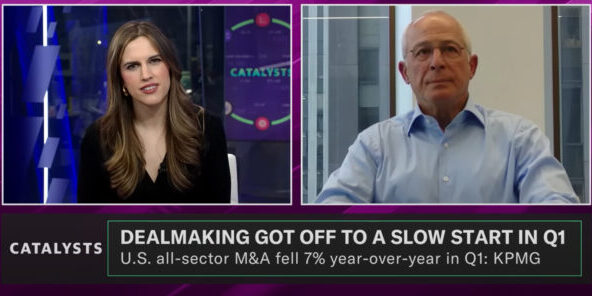Industry Q&A – Marc Cooper with Tim Bath
Industry Q&A – Marc Cooper with Tim Bath
by CEO Marc S. Cooper
I recently sat down with Tim Bath, a Partner and Co-Head of Solomon Partners’ Infrastructure, Power & Renewables Group. A specialist in transportation infrastructure, Tim discussed the investment potential of North American airports and the technology trends reshaping aviation.
Tim, you’ve landed some marquee transactions in your career. How do you assess the post-pandemic U.S. airport space?
The sector has been challenged coming out of the pandemic, not just in the U.S., but globally as well. It has been very difficult to adequately source pilots, ground crews and other staff members. There have been issues related to the demand for air travel returning at a faster pace than the necessary resources to service that demand.
In the U.S., your typical airport is owned by a public sector authority or a municipality. In other parts of the world, airports are more often operated by private entities.
As a general rule, privately operated airports don’t face the same level of red tape and have more flexibility to adopt best practices. However, there has been a broad variance across the different ownership/operating models as to how service levels have been managed during this post-COVID period.
So where are the investable opportunities?
In any given airport, there are probably 25 to 30 different businesses contained within the fence. Rather than attempting to acquire the airport as a whole – which is challenging given existing municipal ownership – you are seeing real growth in investable opportunities in the constituent parts of airports. You are talking about cargo facilities, retail operators, terminal facilities and ground handling businesses as examples.
There are start-up software companies using artificial intelligence to direct you to buy a beer based on what you consumed earlier at a different airport in another part of the country. There is technology being developed to enhance the safety and security environment while at the same time improving passenger processing efficiencies also through the use of artificial intelligence and machine learning. Technologies that optimize car parking businesses is another example. Businesses and technologies that help optimize key elements of an airport are a potential focus for investment.
In North America, there are some unique opportunities for airline-led investment opportunities. American and Canadian airlines are in a strong position to leverage their traffic commitments through equity involvement in new terminal or airport developments. There is tremendous opportunity for airlines to monetize their long-term market positions in a way that brings new facilities and substantial infrastructure investments to a local community – all around reimaging the traditional airline-airline relationship structure in the North American markets.
How will the experience of flying change in the years ahead?
The whole passenger experience, from arriving at the parking lot to boarding the plane, will become more seamless. In the future, everything may be done by facial recognition. Your preferences as to how you book your hotels, what drinks you’ll order, how you reserve your next flight—all these activities will be more seamlessly integrated within your digital device.
The process of floating through any airport should become materially less stressful. Technology is the biggest factor that will impact the airport experience, whether or not consumers know it now. It’s also a big, investable opportunity in my opinion.
Airports have big carbon footprints. Can the private sector help decarbonize aviation?
There are pretty significant investments by airlines and others in sustainable aviation fuel, and certainly significant movement by aircraft manufacturers. The carbon footprint of an airport is obviously quite high.
Most of the investable opportunities to date in this segment of the market require betting on specific technologies – certain manufacturing processes for SAF, a specific OEM for electric aircraft, etc. There will undoubtedly be winners (and losers) among the multitude of early-stage technological players. A more interesting area for us is around opportunities to invest in subsectors while minimizing the concentration within any one particular Original Equipment Manufacturer or company.
Infrastructure that enables these new technologies in a broad way – for example transportation and storage of Sustainable Aviation Fuel, vertiports that accommodate a broad range of what we call eVTOL technologies, which are electric aircrafts that take off and land going straight up and down – these are definitely areas on which we are focusing.
Thank you for your insights, Tim.
It will be fascinating to see how technology and investment capital reshape the flying experience for American passengers in the years ahead.





